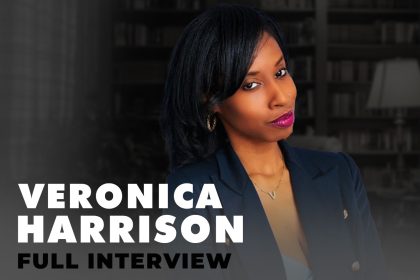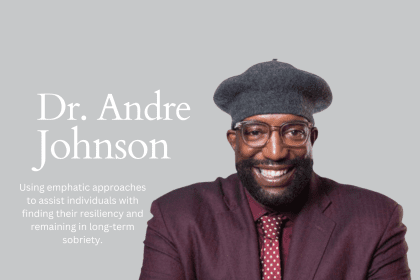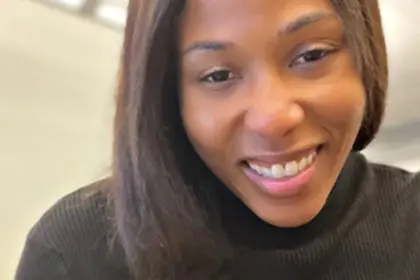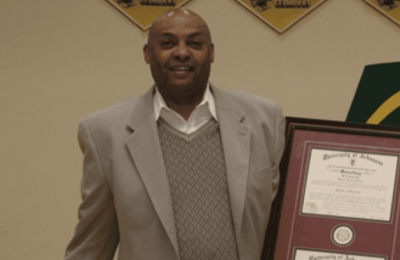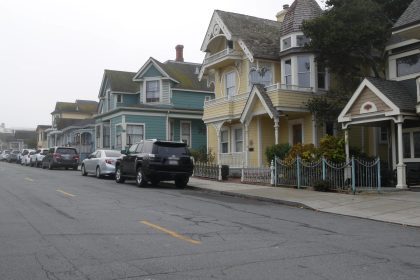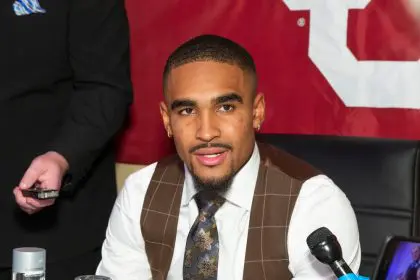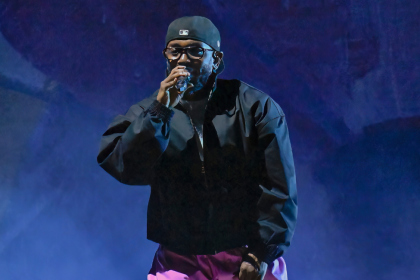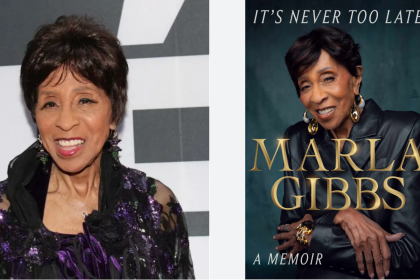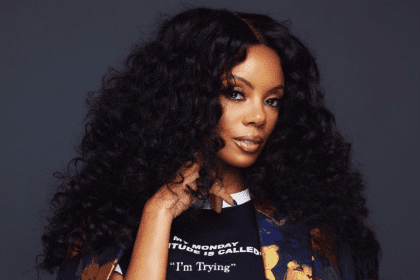
Tracy L. Gray never imagined that her daily conversations with her daughter about her absent father would eventually become the foundation for her debut children’s book. As an educator with over 20 years of experience and founder of the Sankofa Global Project, Gray has dedicated her career to celebrating the creativity of children across the African diaspora. Her journey from single mother struggling to answer difficult questions to published author showcases the transformative power of vulnerability and storytelling.
Her book “Mommy, Where Is My Daddy?” emerged from real-life moments when her daughter SeQuoya would ask about her father’s whereabouts. What started as notes scribbled on paper pieces evolved into a master’s thesis and ultimately a heartwarming children’s story that addresses parental absence with imagination, honesty and love. The book includes a remarkable epilogue about reuniting her daughter with her father after 23 years apart, proving that some stories have endings more beautiful than fiction.
What defining experience shaped your voice as an author?
I come from a family of storytellers. My father was a very gifted storyteller. He was also an attorney, a teacher, a real estate agent, and when he passed, he was a minister. My mother also is a storyteller. She was a social worker for many years, and would come home and tell us stories about her experiences out in the field helping families and communities. Being a classroom teacher for many years, you have to be a great storyteller and an entertainer.
I got my master’s degree at Bank Street College of Education, and I took a children’s literature class. During the entire class we would read children’s books from various authors, various topics, nonfiction, fiction. I love African folk tales. I’ve traveled to Ghana a few times. I taught in an independent school in New York City, which was predominantly white, and I felt that the African voice was missing. I wrote a grant and they sent me to Ghana to learn about Africa.
When I got to Ghana I realized how woefully ignorant I was about Ghanaian culture, about the diversity of the continent of Africa, and it inspired me to think about my own storytelling abilities. I listened to the children share stories that they’d heard from generations. There was a girl who told me about how her family lived in the mountains. She could trace her family for like 900 years, and it blew me away. I really started taking my storytelling seriously. During that time my daughter would ask, “Mommy, where is my daddy?” I was struggling to find a way to tell this story to her about how family and other people in the community were filling in the gap in her dad’s absence.
How did this personal experience become your debut book?
Writing the story was a turning point for me, because it was the basis of my master’s thesis. It took me 15 years to get my master’s degree, and by the time I graduated I ended up with 2 masters. I have a master’s degree in early childhood education, and a master’s degree in general education. Throughout this journey I would take little notes. I used to walk around with little pieces of paper, of the conversations that my daughter SeQuoya and I would have.
When I was looking for a subject matter to study my master’s, my advisor said, “Why don’t you make this your focus? Your children’s book? You’ve been collecting these notes all this time, do something with it.” I did some research on single parents and pursuing education. Through that journey I began to claim my own story. I had a conversation with my daughter, and by that time she was already a senior in high school. I said, “Is it okay if I make this book, use everything that we’ve been talking about over the years for my master’s thesis?” And she goes, “Yeah. The only thing that I ask is that you make the girl’s name SeQuoya Leigh.”
It was coming to terms with my own journey, and being proud of who I am and who I was as a single parent, and celebrating the fact that I didn’t do it by myself. I had my mom, my dad, my siblings, my extended community. Throughout the course of the book I highlighted the time that SeQuoya and I got a chance to spend with my mom, my brother, my sister, friends in the community.
What happened when your daughter kept asking about her father?
At one point in the book and in real life, she goes, “Mommy, I know you keep making these connections between nature and family and my daddy, but I want to know where is my daddy?” I paused, and I said, “You have a lot of questions, and I can’t answer them, and maybe one day you’ll have a chance to meet your dad, and you can ask him those questions.” And so she would draw pictures for him and pray for him at night.
Then in 2010, when Facebook was really starting to blow up, I said, “Let me look for this man.” And I looked for him, and there he was. I introduced him to my daughter because he didn’t even know if I had a girl or boy. I sent him a message on Facebook and I said, “Hey, Michael, remember? I told you you’re not ready to be a parent. One day we will be, and I’ll find you. I found you.”
His first message to me was, “What did we have?” I said, “It’s a girl,” and he goes, “Well, I want to meet her.” I said, “I understand that you want to meet SeQuoya, but I can’t introduce you to her if you’re not going to be committed to being in her life.” He said that he was committed to being in her life, and at this time she was 23. I said to her, “Remember, I told you I was going to find your Dad. Well, I found him.” She fell out of her chair. She was like “What? You found him?”
We started a series of phone conversations and he was in North Carolina. My daughter actually went to North Carolina to spend time with him, and over 13 years she got a chance to spend time with him. He walked her down the aisle for her wedding, got a chance to meet his grandchildren and spend time with him until he passed in 2023.
What was your biggest challenge creating this book?
The greatest challenge I had was being vulnerable and letting the world see the challenge that it was to be a single parent raising a child because people see me as a strong black woman, and I am. My dad made many mistakes in his life, and he owned up to all of them. His favorite saying to me was, “You are in the catbird seat.” No matter where I was in my life, my dad would tell me I’m in the catbird seat. “Own your story. Tell your story. It’s yours. No one can take that from you.”
Owning my own story was probably the hardest part because I carried so much shame from being a single parent. I didn’t choose to be a single parent. I had many years of people being condescending and rude to me for being a single parent. I was determined to rise above, no matter what, but that comes at a cost. There are many challenges with being a single parent, from housing insecurity to food insecurity, having to move every 2 years because the rent goes up. When you have one income it’s no joke.
Being able to be vulnerable and share our story because I didn’t have an answer for SeQuoya when she said, “Mommy, where is my daddy?” I didn’t have an answer for her, and so I did my best to answer that question by helping her see how the trees take care of her, and the sun takes care of her, and the water takes care of her and her family.
How important was having a support system?
Having a village made all the difference in the world, because there were days that I just couldn’t do it. I’d call up a friend and there is a couple, and they’re mentioned in the book. My daughter and their daughter were very good friends, and so they would invite SeQuoya over to dinner just to give me a break, because it was hard. When it came for vacation times, we spent vacation times with family, because then I could get a break.
One of the things that SeQuoya wants to do is to start a podcast talking about what it was like growing up. I want her to own her truth in every way possible, and to celebrate where she is right now, and I get a chance to be a part of that, because I’m her mom.
How do you handle complex topics with children?
One of the things that I’ve learned in my career as an educator is giving children the space to express themselves. In 2006, I was a classroom teacher, and my administration said, “We have a child who is coming to your class who has neuroblastoma,” which is a form of very aggressive pediatric cancer. I visited this child at his home, got to know him and his family. We had to prepare as a community for his arrival, telling the families in the school, and the children were fantastic, they were so warm and welcoming.
Unfortunately, on November 1st 2006, this child died. No one wants to deal with the death of a child, and it’s not supposed to happen. There was a tremendous amount of grieving that took place between the families, between me and my colleagues and the children, and the best thing that we did for the children was to allow them the time and the space to express their grief. Whether it was through play, whether it was through music, whether it was through them talking, whether it was through them writing stories.
There are complex issues that face all of us, and with children facing complex situations there are many opportunities to support them. After I’d left the school many years later, when the children graduated from elementary school, they honored this child at their graduation because they all remembered. There’s not just one answer to dealing with complex issues when it comes to children and adults, but there are many opportunities to allow them to face them when you create that space.
What legacy do you want to leave with your storytelling?
I’m a storyteller, and there are so many stories that need to be told. I hope and believe that telling my story will give other women, children, parents, the courage to tell their own stories and to be creative. I’m a screenwriter. I’m actually working on a large scale animation project and working with families and with people who are artists to bring this to life. By me taking this initiative, finding the resources to bring it to life and hiring people from historically underrepresented communities who have talent, who are artists, who are storytellers, to be a part of this, that’s the legacy I want to leave.
It’s great for me to be able to do this, but there’s an even greater opportunity for me providing other people the opportunity and the space, and to give themselves permission to be creative. Toni Morrison said, now is the time for all of us to be creators, to be storytellers, to not shrink back. Now is not the time for fear. Now is the time for celebration. Now is the time for us to engage in writing and drawing and creating.
I’m really hoping that when people read my children’s book, and they continue following the work that I’m doing, and see the other books that I’ll be publishing, it will give them permission, like, maybe I can do this. That’s my hope for my legacy and for my own children. I have 2 children to embrace their own creativity. That to me is the greatest gift of being a parent is giving my children the time and the space and hopefully the resources and connections for them to pursue the passions that they love, and by extension doing that for my community, for my 2 grandbabies to see that it is absolutely expected for them to be their very best selves and use creativity as an outlet.
Where can readers find your book?
You can find the book, “Mommy, Where Is My Daddy” on Amazon with the exact title by Tracy L. Gray. It is on Amazon, it’s on Kindle. You can also visit my website at tracylgray.com. I’m on LinkedIn at Tracy L Gray. You can find Mommy, Where Is My Daddy on Instagram. You can also find me on Instagram at tracylgray.com, and you can find me on Twitter or X at Mommy, Where Is My Daddy. I hope that folks will find great inspiration in this book, and are able to connect with it in a way that is authentic, and that will support them in their journey for creativity and for storytelling.



